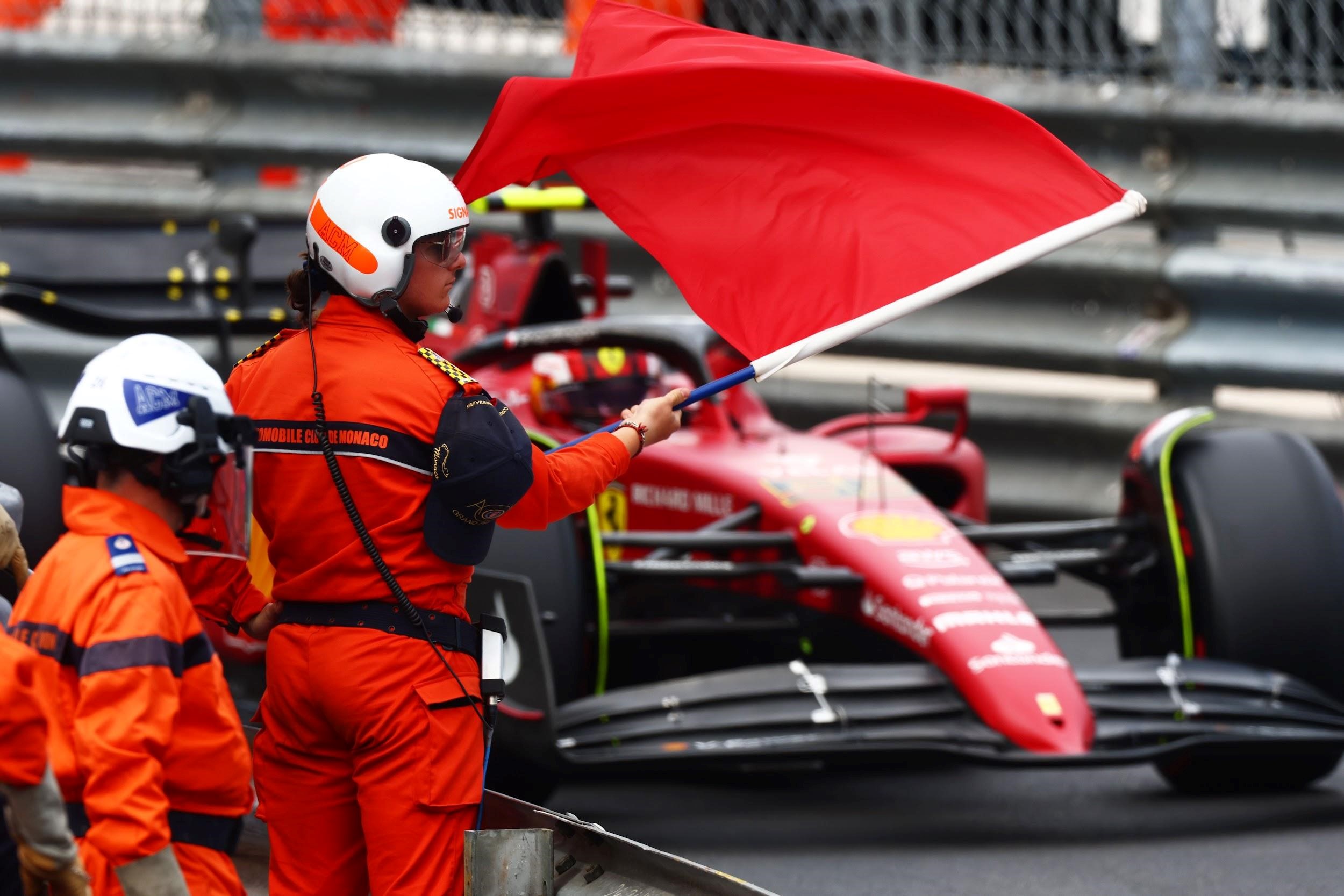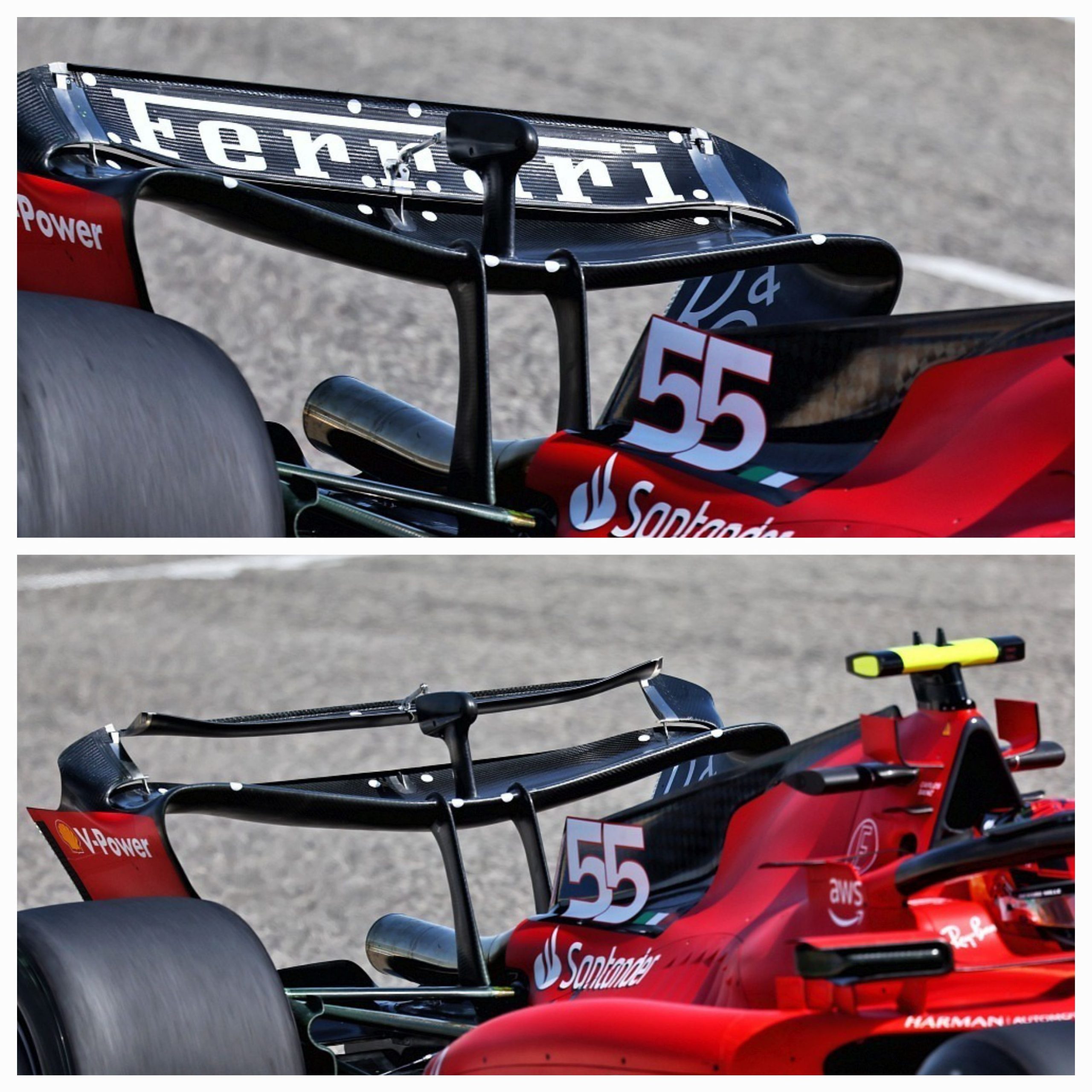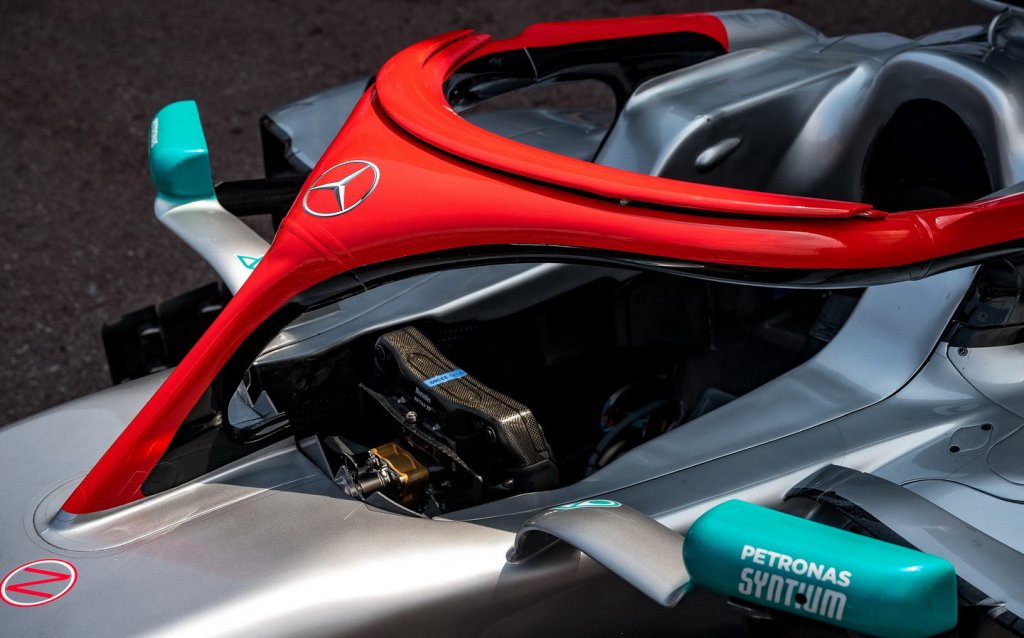
Formula 1 is the pinnacle of automobile racing. Most advanced technologies are staged in every Grand Prix session. To get the best performance and output these cars are made more and more aerodynamic and fast. It is becoming more and more thrilling day by day. Several times many accidents, crashes, collisions are heppens for many reasons. Considering the drivers safety the FIA is enriching the safety features in Formula 1. Since 1950, many things have been included for safety reasons. In modern days, some technology has been invented that reduces a lot of fatal injuries and deaths. Let’s have a look at these safety features.
HALO
HALO was introduced in Formula one in 2018 for increasing driver’s safety. HALO is developed by three manufacturers approved by FIA and provided to every team. It is designed by Mercedes and FIA accepted it instead of Red Bull’s alternative idea.

Source: Sunday Times Driving
The halo is a titanium made driver protection system that is connected with three points of the vehicle above the driver’s head. It is made of grade 5 titanium 6AL4V materials. It is the strongest part of the F1 car and structured to weigh about 9 kg. It is so strong that it can support up to 12000 kg in weight comparable to two african elephants.
In 2009, two fatal accidents of Henry Surtees and Felipe Massa occurred in FIA governed races. Henry Surtees’s accident occurred at Brands Hatch round in Formula 2 season and Felipe Massa’s accident in Hungarian Grand Prix. These accidents pushed the FIA to improve driver cockpit safety. The FIA introduced HALO after the tragic crash of Jules Bianchi at the
2014 Japanese Grand Prix. Since the 2018 FIA has made HALO mandatory in Formula 1 races.
Using HALO can increase 17% of survival rate of a driver according to the simulation based on real incidents. A single HALO can cost between 13000 to 24000 euros. The FIA has made it mandatory in 2018 in Formula 1 to ensure driver safety.
Helmet
Helmet is one of the most important safety tools in Formula 1 racing. It mainly protects a driver’s head. It was made mandatory in 1952. When F1 started head protection for Formula 1
drivers was a leather cap and goggles.
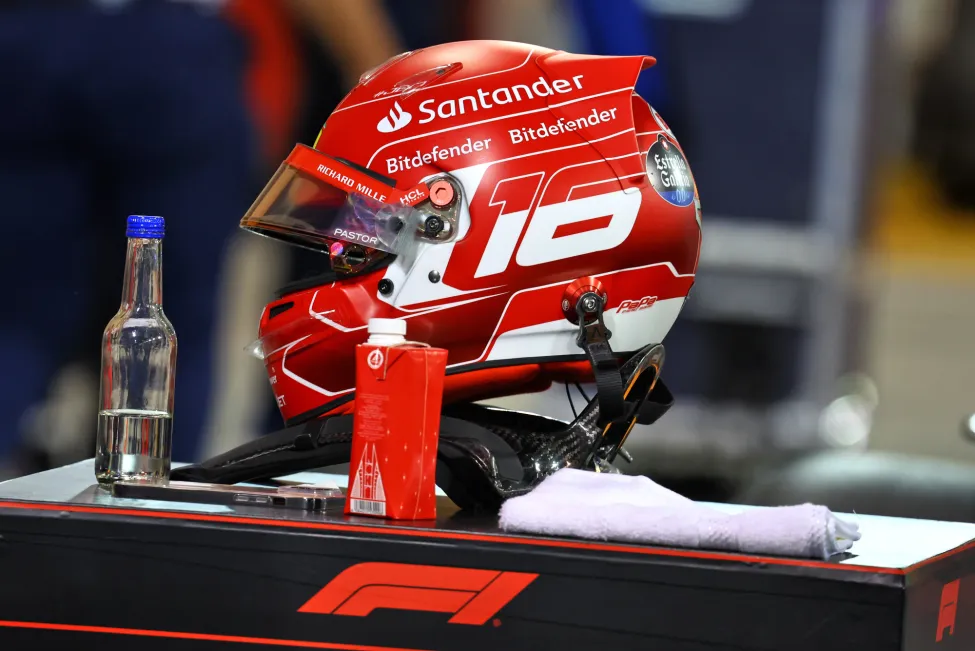
Source: XPBimages
The FIA was continuously improving F1 helmets. The modern day is a huge step forwards and a much more complicated piece of clothing. The major change brought in 2018 was adaptations to the eye-port and visor overlap.
The inner part of the helmet is made from beads of EPS expanded into a helmet like shape. A foam part is inserted into a carbon fibre shell and trimmed off the excess and then sanding down to a smooth finish. Then printing and customising it for different drivers electronics are inserted into it. Finally Visor, electronics for the radio and ventilation in the mouth were added to the helmet.
HANS
The head and Neck support (HANS) device prevents the driver’s head from fatal injury during a crash. In 1994, Roland Ratzenberger fell in a fatal accident and got a serious injury in his skull at Imola. After that, FIA introduced a new safety feature named HANS. The FIA made it mandatory in 2003.

Source: Autosport
HANS connects with a helmet anchor device with a latch. Then the driver wears the helmet after entering the car and the safety harness ( seat belts) goes over the HANS device. So in the crash the harness holds back the HANS device and limits the movement of the driver’s head and neck. The helmet remains anchored with the latch and for that head gets rid of frontal collisions.
Using a harness without HANS is very dangerous. Harness pulls the driver’s shoulder back but the head and neck are forced to go forward and get injured.
Survival Cell

Source: Motorsport Technology
The survival cell or the monocoque is the central part of the Formula 1 car. It protects a driver during crashes or collisions. It is a 6mm thick extremely strong carbon fibre composite material. It can absorb a huge amount of energy that saves a driver from crashes. After going through extensive testing it is permitted to use.
Race suit
A race suit protects a driver from fire and light scratches during an accident or crash. The FIA declared that the suit should be all in one piece and features solder handles so it is known as overall. The FIA made race suits mandatory in 1963 but that wasn’t fire resistance. It took another 12 years until 1975 for them to make the overalls meet a fire resistance standard.
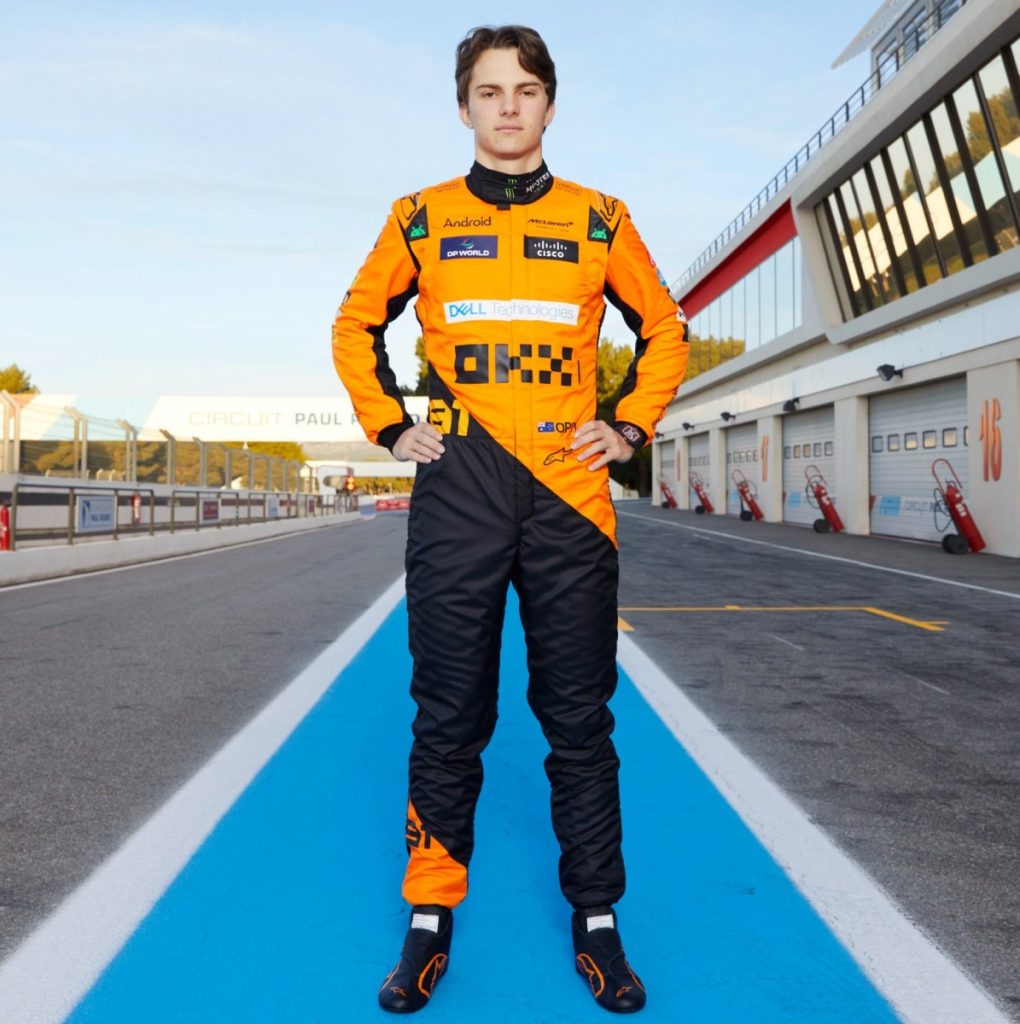
Source: Sports Illustrated
These suits mainly protect drivers from fire. These can protect in extreme temperatures like 600-800 degrees for almost 11 seconds. Race suits are made of flame resistant fibre and fire resistant Nomex coating. Also they must be made lightweight, comfortable and close-fitting wrists and anklets with high collars. The zip should be covered with a fire resistance flap. Nowadays a suit weighs about 0.75kg or 750 grams. The entire suit is rigorously tested; everything from the zips to the shocks are scrutinised to ensure that drivers are protected from fir.
Biometric monitoring
Biometric gloves were introduced in Formula 1 in 2018. These gloves are made of fire resistance Nomex material and fitted with 3mm thick sensors. It is a very important safety feature that measures drivers pulse, oxygen level, and pressure. It transmits data continuously to the medical team that helps to realise a driver’s health conditions and quickly extract him if needed.

Source: FormulaNerds.com
It also monitors drivers’ physical conditions after a crash that helps the team to rescue fast and take proper steps.
Fire resistant gloves were introduced in 2021 after the Bahrain Grand Prix. After that the FIA started looking for improving the gloves safety features. In 2021, FIA introduced advanced gloves that added more than 1.5 seconds of fire resistance than before.
Safety Car
Safety cars are deployed on the circuit to reduce the speed of competing cars when any accident occurs or wet weather conditions. Safety car was first used in 1973 at the Canadian Grand Prix which was a yellow porsche. But the Safety Car was officially introduced in 1993.
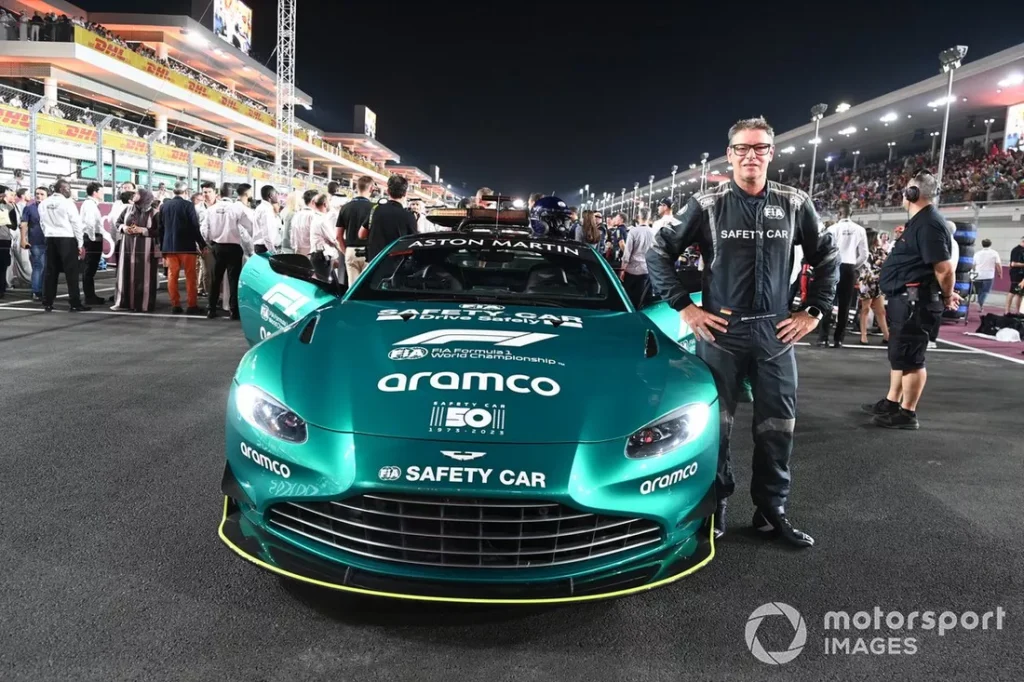
Source: Motorsport Images
A waving yellow flag and SC sign on the light panel means that safety cars have deployed on the track and drivers are not allowed to overtake.
Mercedes -AMG GT Black series is used as a safety car from 2022. A German driver named Bernd Maylander has been driving the safety car since 2000.
After deploying a safety car overtaking is forbidden until the safety car called off. If a driver overtakes during a safety car period he will run into a penalty. Safety car returns to the pitlane at the end of the lap when the circuit is being cleared. Then drivers get a signal and can go back to the normal race.
Virtual Safety car

Source: AutoHebdo
The Virtual Safety Car (VSC) is another version of Safety Car introduced during the 2015 seasons. At the Japanese Grand Prix in 2014, Jules Bianchi lost his control and crashed into a tractor that was removing another crashed vehicle from the track. Jules Bianchi got a severe head injury and died after 9 months. After that, the FIA implemented the system of virtual safety cars.
Virtual Safety cars aren’t real cars on the circuit. If any accident occurs or another issue found on the circuit then the race director can issue a Virtual Safety Car. After deploying the car, drivers speed is limited by around 30% throughout every marshalling sector during the VSC period. Drivers must abide by the delta time through each marshalling sector. Also it maintains the same gap between the drivers comparing the gap before the VSC deployed. If the VSC deployed while a car is driving on the pit lane to the pit entry, they can enter the pits. They will be able to do a pit exit when the authority permits.
VSC are declared with a VSC sign on the board and a message is sent to the competitors. Once the circuit is ready to resume the race, the VSC is called off and the light panels become green. Drivers get a warning window of 10-15 seconds before resuming the game while the light panels remain green. If the green light turns off then drivers can return to a normal race.
These are the Formula 1 safety features regulated by the FIA. The FIA changes and brings updates on those features which makes the race more enjoyable and thrilling.
know more about formula 1 explained.


